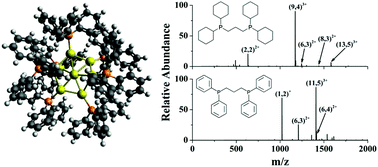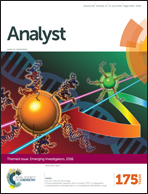Understanding ligand effects in gold clusters using mass spectrometry
Abstract
This review summarizes recent research on the influence of phosphine ligands on the size, stability, and reactivity of gold clusters synthesized in solution. Sub-nanometer clusters exhibit size- and composition-dependent properties that are unique from those of larger nanoparticles. The highly tunable properties of clusters and their high surface-to-volume ratio make them promising candidates for a variety of technological applications. However, because “each-atom-counts” toward defining cluster properties it is critically important to develop robust synthesis methods to efficiently prepare clusters of predetermined size. For decades phosphines have been known to direct the size-selected synthesis of gold clusters. Despite the preparation of numerous species it is still not understood how different functional groups at phosphine centers affect the size and properties of gold clusters. Using electrospray ionization mass spectrometry (ESI-MS) it is possible to characterize the effect of ligand substitution on the distribution of clusters formed in solution at defined reaction conditions. In addition, ligand exchange reactions on preformed clusters may be monitored using ESI-MS. Collision induced dissociation (CID) may also be employed to obtain qualitative insight into the fragmentation of mixed ligand clusters and the relative binding energies of differently substituted phosphines. Quantitative ligand binding energies and cluster stability may be determined employing surface induced dissociation (SID) in a custom-built Fourier transform ion cyclotron resonance mass spectrometer (FT-ICR-MS). Rice-Ramsperger-Kassel-Marcus (RRKM) based modeling of the SID data allows dissociation energies and entropy values to be extracted. The charge reduction and reactivity of atomically precise gold clusters, including partially ligated species generated in the gas-phase by in source CID, on well-defined surfaces may be explored using ion soft landing (SL) in a custom-built instrument combined with in situ time of flight secondary ion mass spectrometry (TOF-SIMS). Jointly, this multipronged experimental approach allows characterization of the full spectrum of relevant phenomena including cluster synthesis, ligand exchange, thermochemistry, surface immobilization, and reactivity. The fundamental insights obtained from this work will facilitate the directed synthesis of gold clusters with predetermined size and properties for specific applications.

- This article is part of the themed collection: Emerging Investigators

 Please wait while we load your content...
Please wait while we load your content...